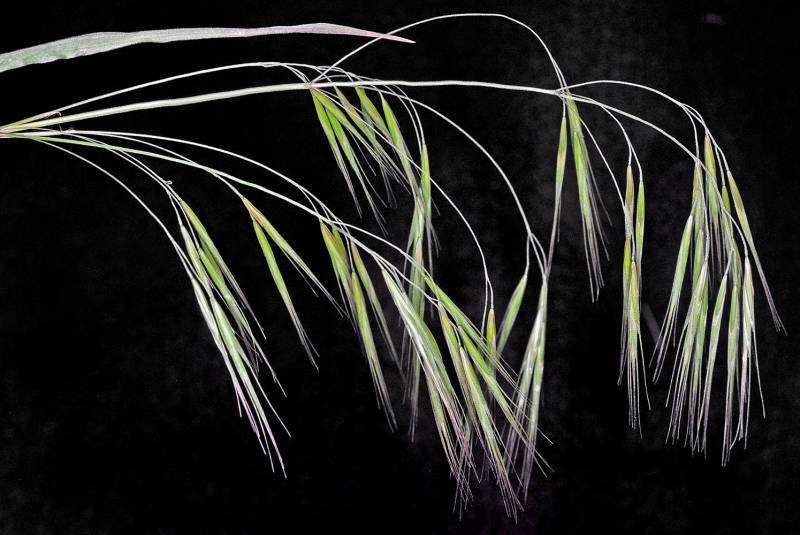Hosted by the University of Washington Herbarium, Burke Museum
Publication: Sp. Pl. 1: 77. 1753.
Origin: Introduced from Europe
Herbarium search: CPNWH
Notes: FNA24: "Bromus tectorum is a European species that is well established in the Flora region and other parts of the world. It grows in disturbed sites, such as overgrazed rangelands, fields, sand dunes, road verges, and waste places. In the southwestern United States, Bromus tectorum is considered a good source of spring feed for cattle, at least until the awns mature. It is highly competitive and dominates rapidly after fire, especially in sagebrush areas. The resulting dense, fine fuels permanently shorten the fire-return interval, further hindering reestablishment of native species. It now dominates large areas of the sagebrush ecosystem of the western Flora region. See Schahner et al. 2008 discuss the population genetics of this species in the midcontinental United States and cite earlier papers on a similar topic for other parts of the country.
Specimens with glabrous spikelets have been called Bromus tectorum f. nudus (Klett & Richt.) H. St. John. They occur throughout the range of the species, and are not known to have any other distinguishing characteristics. For this reason, they are not given formal recognition in this treatment."
Last updated 5/24/2020 by David Giblin.

